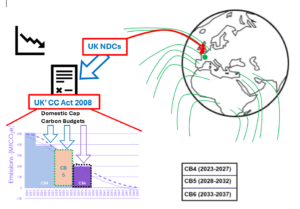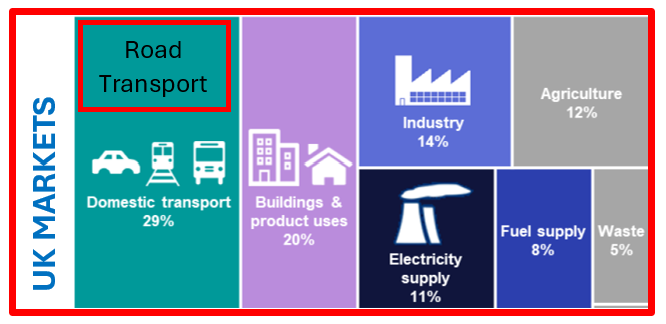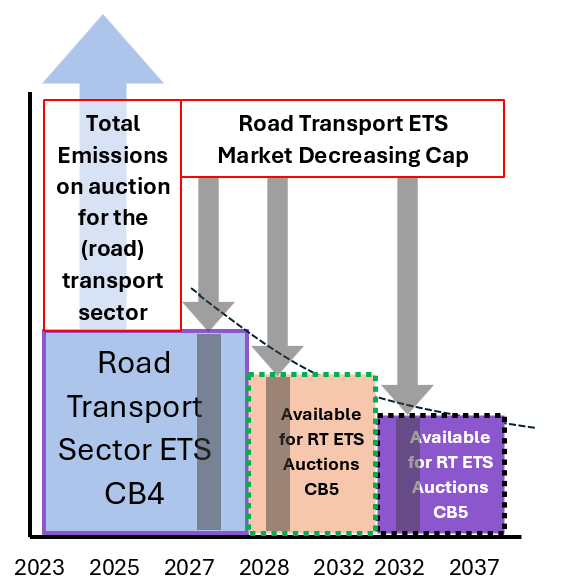Shaping the UK road transport Emissions Trading Scheme (ETS)
How a UK Road Transport ETS gears up within the UK’s Emissions Trading Scheme?

The UK’s international undertaking to cut its emissions—set out in its Nationally Determined Contributions (NDCs) agreed at COP15—was turned by law, into a series of legally binding limits called Carbon Budgets, through the Climate Change Act of 2008.
These budgets specify the maximum amount of greenhouse gases the UK can emit over a set period for all sectors, caped year on year.
The Carbon Budgets form the basis for the overall caps in the cap-and-trade systems, which in turn determine how many allowances each sector receives with free allowances or by auction, caped YOY.
The EU ETS2 consider auctioning allowances only.
The UK has included in its high ambition scenario within the policy assumptions, expanding the Emissions Trading Scheme (ETS) to cover road transport fuels from 2028
The Road Transport ETS, is an Emissions Cap and Trade Scheme.
The transport sector is responsible for 25-29% of the total GHG emissions in the UK where the road freight transport represent ~5% (20mTCO2e/~400)


The Emission Trading Scheme (ETS) is a cap-and-trade system which caps the total level of greenhouse gas emissions, creating a carbon market with a carbon price signal to incentivise decarbonisation.
The UK ETS came in to force on 1 January 2021 to replace the UK’s participation in the EU ETS, which was established in 2005.
CB: Carbon Budgets
